- remind me tomorrow
- remind me next week
- never remind me
The X Button
Something Sinistral
by Todd Ciolek,

I'll start this week by addressing a complaint from last week: that I didn't put Fallout: New Vegas in the release listings. I seem to run into a problem covering Western releases. When I leave out popular ones, people complain that they're missing. When I put them in, other people complain about these Halo and Fallout things taking up space that could be used for, I don't know, minute new details about the next Disgaea port. At least I can be sure that anyone interested in Fallout: New Vegas knew that it was coming out, and that anyone interested in Fable III knows it's out today. So I'll put the question to you: do you want all relevant Western games covered, no matter how well-known and heavily advertised they might be?
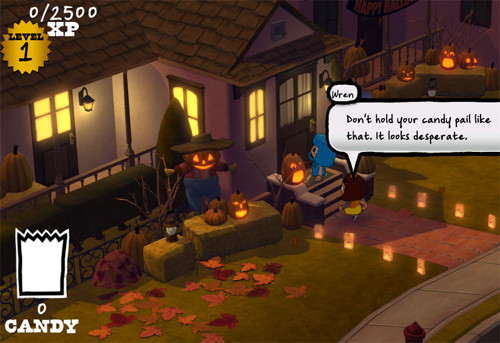
A far greater crime was my not mentioning Costume Quest, the new offering from Double Fine. It lacks the budget (or the catchy title) of such previous Double Fine works as Psychonauts and Brütal Legend, but it has plenty of good ideas. In this tale of a Halloween kidnapping, a RPG quest allows crude childhood costumes to turn the hero or heroine into full-blown, monster-slaying versions of robots, knights, Statues of Liberty, and whatever else can be imitated with suburban neighborhood debris. It's well worth grabbing off Xbox Live or the PlayStation Network, and I hope it won't go ignored during this busy time of year.
NEWS
THE LAST STORY PLAYS WITH BATTLES
Japan's RPG are dominated by franchises: Dragon Quest, Final Fantasy, Tales of Vague Adjectival Noun. But Mistwalker's upcoming The Last Story is getting some good press, and not just because it's the newest project of Final Fantasy creator Hironobu Sakaguchi, who's tried to break back into the RPG world's highest echelons with his studio Mistwalker.
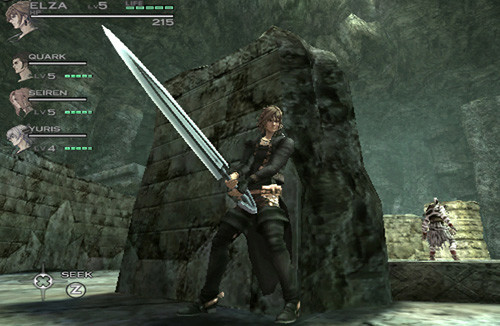
The Last Story adopts a noticeably medieval style for its fantasy setting, free of crystal-powered mecha or transforming sword-guns. Everything hinges on Ruli Island, a popular merchant locale caught in a power struggle. It leads the isle's ruler, Aragorn Arganon, to hire mercenary hero Elza and his allies, including elder merc Quark, taciturn mage Yuris, salacious swordsmage Jackal, boozing bladefighter Seiren, and hippie peacenik healer Manamia, whose name brings to mind this song. And then there's the other main character: for this game, the part of the Mysterious Girl Who Knows More Than She's Saying will be played by Kanan.
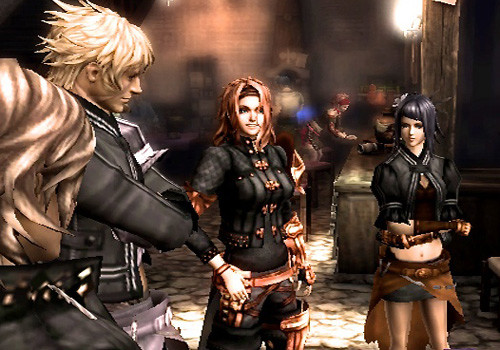
If that's not particularly original, the game has an attractively down-to-earth tone, like Yasumi Matsuno's Tactics games crossed with an older Final Fantasy. The gameplay takes some odd risks for an RPG, as players must lure enemies away from weak magic users, whose arts differ from the genre's usual spellcasting. Sorcerers plop down special circles that determine the scope and strength of spells, and Elza can expand that magical reach with his own abilities. The Last Story also makes use of something often barely acknowledged in traditional RPGs: the surroundings. Mages can send pieces of castle wall or bridge crashing down on enemies, and characters can hide behind large objects while sniping at enemies.
Other things about The Last Story remain unclear: the design team, the game length, and, most of all, whether or not it's coming to North America. Mistwalker won't reveal that last detail until the end of this year, shortly before the game's January launch in Japan.
MUSHIHIME-SAMA: BUG PANIC IS A SHOOTER AFTER ALL
Speaking of once-secretive games, Cave's Mushihime-sama: Bug Panic shooter received a clear new trailer, revealing it as an overhead action game for the iPhone and iPod Touch. It stars Reco of the Mushihime-sama series, though she's apparently ascended to being an “insect queen” instead of a mere princess. In her search for evildoers in her invertebrate kingdom, she wanders large levels and throws bombs at all in her path. This carnage is all set to a soundtrack co-written by Michiru Yamane, best known for her gorgeous Castlevania work.
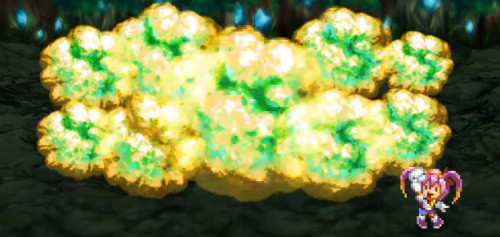
The game's trailer shows off an old-fashioned, free-roaming sprite shooter, and those are all well and good on the iPhone. Reco's bomb-tossing attacks are a little odd, though, as they're less direct than simply shooting straight at foes, which got Reco through previous Mushihime-sama titles. Cave's promoting the game with a “Fall 2010” release, so it'll be upon us very shortly. There's no word on the price or whether the game will include that annoying Bug Panic theme song. It's growing on me, I hate to admit.
VENUS & BRAVES GETS A PSP REMAKE, TALES CAMEOS
It's sad that Namco's Venus & Braves wasn't brought to North America during the PlayStation era. It's exactly the sort of simple-looking, anime-fantasy strategy-RPG that publishers were snatching up after Disgaea hit it big. But Namco was unmoved, and Venus & Braves stayed exclusive to the Japanese PlayStation 2. Perhaps the same fate won't meet its PSP remake.
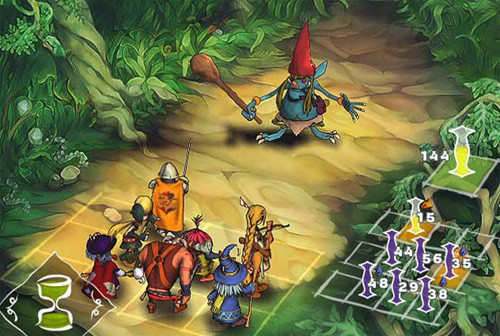
The cartoonish, fairy-tale look of the game hides a bleak concept: the lead, Blood Boall, is 345-year-old warrior who looks like a teenager, and he contends with two similarly immortal witches over the course of the game. His followers take on enemies in grid battles, and many of them eventually die—not from enemy attacks, but from old age. Fortunately, their weapons gain levels and can be passed on to subsequent allies, as Blood outlives his forces.
Never one to ignore guest stars, Namco's packing the PSP version with three characters from its popular Tales series: Leon from Tales of Destiny, Yuri from Tales of Vesperia, and, for some reason, Colette from Tales of Symphonia, even though everyone liked Sheena and Zelos and Raine better. Maybe Namco will let bitter Symphonia fans watch her aged demise. Either way, Venus & Braves will arrive on the Japanese PSP this January.
REVIEW: LUFIA: CURSE OF THE SINISTRALS
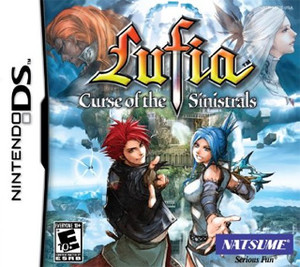 Developer:Neverland Company
Developer:Neverland Company
Publisher: Natsume
Platform: Nintendo DS
Players: 1
MSRP: $29.99
The Lufia series had the makings of greatness. The original Lufia and the Fortress of Doom offered a memorable opening with some excellent music, and the prequel, Lufia II: Rise of the Sinistrals, showed off enjoyable puzzle dungeons and a few daring turns of plot. Unfortunately, both were brought down by tedious battles and the same insufferable clichés that RPGs should've exorcised back in 1988. But Neverland didn't give up on Lufia, not even after a disappointing outing on the Game Boy Color and an awful one on the Game Boy Advance. Lufia: Curse of the Sinistrals returns to Lufia II, the best-known of the series, and transforms it into an action-RPG. It's mostly for the better.
The story doesn't change in any broad sense. As in the original Lufia II, this DS remake finds godlike beings called Sinistrals threatening the world, stymied only by a redheaded hero named Maxim. Things move much faster, though: five minutes in, and Maxim's fighting Gades, the first and most obnoxiously voiced Sinistral. It isn't long before Maxim gathers his redesigned allies: smart-aleck childhood friend Tia, thick-headed warrior Guy, cautious elf gunner Artea, endearingly moronic jack-of-all-weapons Dekar, and Selan, a blue-haired general who's only aloof and resilient until Maxim courts her. Other familiar names from the original return as well, with equally new looks. Thoroughly irritating thieves Berty and Betty are entirely different, and the inventor Doctor Lexis now looks as close as an RPG character can get to Doc Brown from Back to the Future.
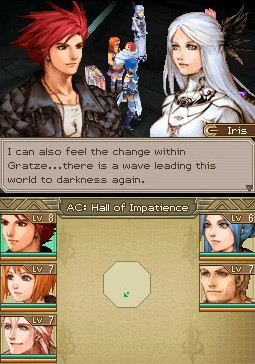 Beyond the storyline, Lufia: Curse of the Sinistrals is a vastly different game. Shedding the tedious menu-based battles of the original, the DS game is an action-RPG, emphasizing combos, powered-up attacks, and dodging in its combat. It's all an improvement: enemies are not very bright, but they can turn deadly once enraged, and players have to roll and double-jump to evade them. Holding down a shoulder button charges up several special attacks, and characters can be switched out any time. Better yet, they're all unique in style: Maxim is balanced, Selan wields a long-range chakra, Guy breaks objects, Tia uses a spring-loaded boxing glove as a grappling hook, Artea packs a energy rifle and floats in the air (and resembles an elf version of Devil May Cry's Dante), and Dekar can use any of his allies' weapons.
Beyond the storyline, Lufia: Curse of the Sinistrals is a vastly different game. Shedding the tedious menu-based battles of the original, the DS game is an action-RPG, emphasizing combos, powered-up attacks, and dodging in its combat. It's all an improvement: enemies are not very bright, but they can turn deadly once enraged, and players have to roll and double-jump to evade them. Holding down a shoulder button charges up several special attacks, and characters can be switched out any time. Better yet, they're all unique in style: Maxim is balanced, Selan wields a long-range chakra, Guy breaks objects, Tia uses a spring-loaded boxing glove as a grappling hook, Artea packs a energy rifle and floats in the air (and resembles an elf version of Devil May Cry's Dante), and Dekar can use any of his allies' weapons.
Neverland also preserves the best part of the original Lufia II: the puzzles. Battles are interspersed with some fairly inventive challenges, most of which require the heroes' specific abilities. Many of the early ones are just a matter of hitting the right switch or finding the right artifact, but the later puzzles show off some complex tasks worthy of a Zelda entry. It's true, though, that some characters are also more useful than others; Artea doesn't join until the game's last act, and his handy firearm is used in only one or two stages. The game was clearly cut short at some point, but Curse of the Sinistrals doesn't care about squandered potential.
Nor does the game care too much about challenging the player. There are certainly difficult sections, including some nasty boss encounters and a randomly generated dungeon where characters go in with only the basic necessities. Yet the game also offers players the chance to raise their levels after a boss defeats them, with no penalty beyond a warning about the fight being too easy. Curse of the Sinistrals also sports a character-customizing board where various power-up stones enhance everyone's abilities. Unfortunately, it's not hard to stack specific characters with the most potent gems. If you put any thought into it, the board will turn Selan into an unstoppable magical powerhouse by the last dungeon.
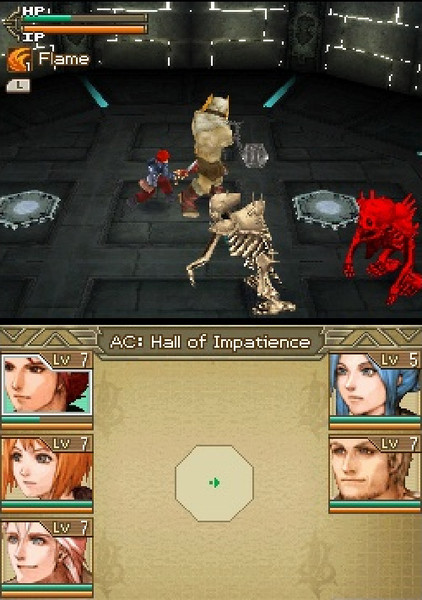
Curse of the Sinistrals looks better than a glance suggests. While the protagonists appear small and murky at first, they suit the gameplay in ways that larger, huge-headed characters wouldn't. The environments are decent 3-D collections, and boss battles inspire all sorts of giant monstrosities and elaborate effects. The second-string developer's budget shows in other ways, though: there's no world map to explore, and dungeons are reused throughout, as Maxim and his companions return to explore new levels of temples and caves they've already cleared. The repetition gets especially annoying in the game's last act, where you're forced to visit several towns just so an elf songstress can make people happy with her singing.
Neverland nabbed a lot of the game's soundtrack from the first two Lufia games, apparently reasoning that they couldn't rewrite it better. They were correct, and the music's just as catchy as it was back in the 1990s. While the characters are voiced only here and there, New Generation Pictures adapted it well; the leads all have cartoonishly apt voices, from Tia's chirping to Guy's baritone. A shame that Gades has both the least impressive voice and the first one players hear.
 If Curse of the Sinistrals improves the gameplay of an early '90s RPG, it doesn't do quite as much for the storyline. The remake adds Yusuke Naora character portraits and more dialogue, but then it replaces the bland plotting of the original with gallons of sugary melodrama. When it's straight-faced, Curse of the Sinistrals collects many insipid traits of the common RPG: people talk about “energy waves” as though they're Dragon Ball Z warriors, plot points arise from nowhere, and supporting characters add nothing. It's perhaps better than the original Lufia II, though that game's gutsy little ending doesn't hit as hard in Curse of the Sinistrals (and a second trip through rewrites it). At least you can fast-forward dialogue.
If Curse of the Sinistrals improves the gameplay of an early '90s RPG, it doesn't do quite as much for the storyline. The remake adds Yusuke Naora character portraits and more dialogue, but then it replaces the bland plotting of the original with gallons of sugary melodrama. When it's straight-faced, Curse of the Sinistrals collects many insipid traits of the common RPG: people talk about “energy waves” as though they're Dragon Ball Z warriors, plot points arise from nowhere, and supporting characters add nothing. It's perhaps better than the original Lufia II, though that game's gutsy little ending doesn't hit as hard in Curse of the Sinistrals (and a second trip through rewrites it). At least you can fast-forward dialogue.
Yet Curse of the Sinistrals also has sense enough to mock itself. When they're not caught up in anguished clichés, the characters joke around and point out the sillier moments of the story. They're all more appealing for it. Tia, once a boring goody-goody, is a wisecracking mechanic. Guy's tough-guy stereotype gets him a few good lines. And Selan's finally the formidable warrior she was always supposed to be, even if her relationship with Maxim is just as rushed and insulting as it was before. After the numbingly paced breast-beating of Final Fantasy XIII and the dreadful narration of Metroid: Other M, it's refreshing to find a game that knows how stupid it is.
For all of the extensive changes made, Lufia: Curse of the Sinistrals is faithful to its source in one important way: it's an enjoyable B-list RPG, just as Lufia II: Rise of the Sinistrals was all those years ago. Even if it can't escape the failings of its kind, it thrives on its engaging puzzles and combat, plus the occasional bursts of humor. The Lufia series will likely never achieve greatness, but Curse of the Sinistrals does just fine without it.
THIS WEEK'S RELEASES
KIRBY'S EPIC YARN Hey, Kirby's smiling. That's important, because the North American covers for most of the previous Kirby games gave the little pink marshmallow a determined scowl. Perhaps Kirby's Epic Yarn just isn't the sort of game anyone could be serious about. It's a happy thing, a thing where a yarn-like Kirby trundles through side-scrolling levels, transforming himself into a car, a UFO, a parachute, a dolphin, a giant frickin' robot, and other useful things. Molding Kirby into these various shapes, players guide him through colorful stages that show off some very clever action-platform design, with assorted secrets to discover throughout. There's also a two-player mode featuring Prince Fluff, the curiously Kirby-like royalty who spurs on Kirby's quest to rescue the felt nation of Patch Land from a villain named Yin-Yarn. Fluff was the game's original main character before Kirby took center stage, so we can hope for some residual bitterness to the game.
|
NEXT WEEK'S RELEASES
DRAGON BALL Z: RAGING BLAST 2 I imagine that some fans are more interested in what comes with Dragon Ball Z: Raging Blast 2 than in the game itself. The game includes The Plan to Eradicate the Saiyans, a 30-minute Dragon Ball Z OVA never before released in North America. It's actually a remake of an older OVA that inspired a Dragon Ball Z Playdia game (which no one touched), but it's rare to see new-for-America anime bundled with a Dragon Ball Z game. Raging Blast 2 is also branching out with a roster of over 100 characters, including such obscure new choices as Android 14, Android 15, Hatchiyack, and Tarble. The actual gameplay features extensively destroyable environments and all sorts of power-up methods, which enable accurate recreations of Dragon Ball Z fisticuffs. Namco Bandai's also promising a story more, though I doubt it'll include an original plot for each of the game's 100 characters. Still, there's a new Dragon Ball Z cartoon in there, and that's going to be enough for some people.
|
FIST OF THE NORTH STAR: KEN'S RAGE Remember Sword of the Berserk: Guts' Rage, that old Dreamcast hack-and-slasher based on Kentaro Miura's Berserk? Well, Koei's Fist of the North Star brawler has equally bloody manga roots, and its hero's rage is just as important. Don't let that fool you, though: huge-eyebrowed hero Kenshiro isn't the only one so enraged, as he's joined by eight other playable characters, from the sharp-handed Rei to the yoyo-wielding Mamiya (you also get the obese Mr. Heart with a GameStop preorder). Ken's Rage is Fist of the North Star run through a Dynasty Warriors assembly line, so there are massive fields of none-too-swift enemies to pound until they explode messily. When not chopping and/or blocking, the Fist of the North Star heavyweights can also ride motorcycles, toss giant pieces of wreckage, and follow an abridged version of the manga's storyline. Pivotal boss battles all end with players tapping quick strings of buttons to unleash deadly attacks, because hammering enemies to pieces shouldn't be too easy. The game's packed with several small story modes and unlockable features, though its biggest hurdle may the same one that faces the Dynasty Warriors: the repetition of pounding the same enemies 12,000 times over. Even so, this is the most ambitious Fist of the North Star game in a while, and it makes up for the one that Taxan foisted on children in the days of the NES.
|
POKEPARK WII: PIKACHU'S GREAT ADVENTURE Pokepark shows just how strong this whole Pokemon thing is still going: it's a video game based on the traveling Pokemon carnival, which is based on the video game. In contrast to the menu-driven battles of the main Pokemon games, Pikachu's Great Adventure resembles an action game, with the little yellow lightning-mouse running through the Pokepark and engaging in various mini-games. He also battles other Pokemon and encounters both new and “classic” representatives from the Pokemon roster. Strangely, their cruel human masters don't appear to be around to goad the creatures into fighting, which raises all sorts of questions about how motivated Pokemon are by their personal hatreds. It's all cute and light and generally for kids, though there's some nostalgia in this for the generation who grew up knowing more about Pokemon evolution than living U.S. Presidents.
|
YS: THE OATH IN FELGHANA The Ys series was never even one-tenth as popular outside of Japan as it was inside, but North American audiences had plenty of chances to play Ys III: Wanderers from Ys on the Super NES, Sega Genesis, and Turbo CD back in the day. Too bad the game was an awkward side-scrolling affair instead of a smoother overhead action-RPG like the first two Ys titles. Falcom apparently regretted that little design choice, because the game's remake, The Oath in Felghana, goes back to the skewed top-view style seen in Ys revamps and new games alike, with smart 3-D graphics enhancing the running, slashing, jumping, and puzzle-solving of these traditional action-RPGs made modern. While the gameplay is extensively redesigned compared to the original's, the storyline is an Ys standard: adventurer Adol and his friend Dogi end up in yet another kingdom threatened by yet another ancient evil, only this particular evil-threatened kingdom is Dogi's homeland of Redmont. XSEED's special edition of the game includes a desk calendar and a soundtrack CD, and while that's not particularly notable for many RPG packages these days, the Ys games are known for excellent music.
|
discuss this in the forum (39 posts) |
this article has been modified since it was originally posted; see change history
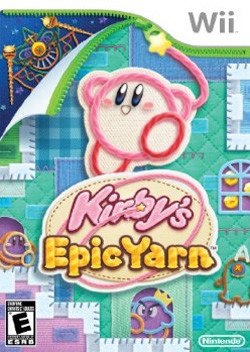 Developer:HAL/Good Feel
Developer:HAL/Good Feel 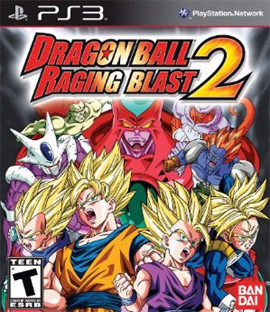 Developer: Spike
Developer: Spike Developer:Omega Force
Developer:Omega Force 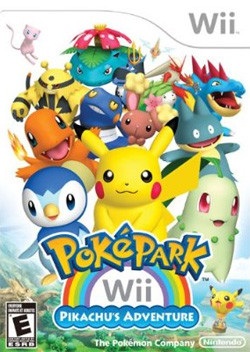 Developer: Nintendo
Developer: Nintendo 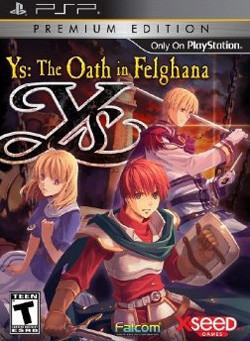 Developer:Falcom
Developer:Falcom